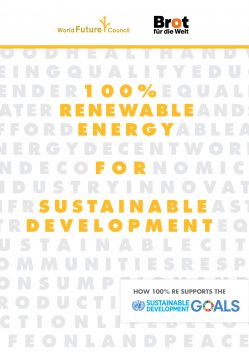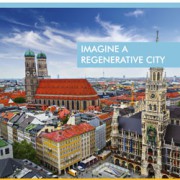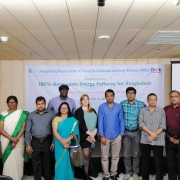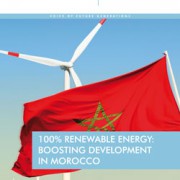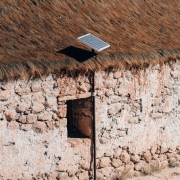Sponge Cities: What is it all about?
The 34 hectares urban storm water park in the city of Harbin in northern China is an example of successful Sponge City intervention. The storm water park provides multiple ecosystems services: it collects, cleanses and stores storm water and lets it infiltrate it into the aquifers. At the same time it protects and recovers the native natural habitats and provides an aesthetically appealing public space for recreational use.
Sponge City. Yet another term on the growing list next to regenerative, sustainable, green, eco, resilient, low-impact, future proofing, zero-carbon, and the list goes on.
Strange as it may sound, this term has actually gained a huge amount of support, especially in China. In fact, the Chinese government has already chosen 16 pilot cities and allocated to each of them between 400 and 600 million yuan for the implementation of innovative water management strategies that would gradually transform these cities into “Sponge Cities”.
What are the key issues the Sponge City wants to solve?
Before explaining in more detail what a Sponge City actually is, it is important to appreciate the main issues that the Sponge City intends to tackle. These are mainly four:
- Less water available in urban and peri-urban areas. First of all, a key question we need to answer to explain this issue is: Where do we get the water that comes out of our taps? Many times it is actually coming from aquifers underneath our feet. As it rain, water is absorbed by the ground and naturally filtered by the soil. We can then extract this water by drilling wells into the ground and pumping water out of it. The water is then collected and treated before is distributed across the city and can reach every tap in each of our houses and offices. The problem is that extensive urbanization and urban sprawling led to the formation of thousands of square kilometres of impermeable areas made up of impervious roads, pavements, roofs and parking lots that do not allow water to be absorbed into the ground but that simply collect the rainwater through the urban drainage infrastructure and channel it into rivers, lakes or into the sea. This traditional type of design led to the creation of cities which are increasingly impermeable and have an increasingly greater impact on the natural water cycle. In practise this means that since less rain water is allowed to filter through the urban soil, less water is available to be extracted from aquifers in urban and peri-urban areas.
- Polluted water discharged into rivers or the sea. Another key issues is related to the fact that rain water and wastewater (namely water from our sinks and toilets) is collected by one single drainage system. This drainage system (imagine one big pipe) collects all the rain water (when it rains) and the wastewater from our houses and directs it to a wastewater treatment plant where it gets treated before it is discharged again into rivers or the sea. When it rains, many times the wastewater treatment plant cannot accommodate all the water that the drainage systems carries. Therefore much of the rain water mixed with the wastewater is discharged untreated into rivers. The more impermeable the city is, the more water will be mixed with wastewater and will not be able to be treated but discharged directly into rivers. This increases the level of pollution of local water bodies.
- Degradation of urban ecosystems and green areas due to sprawling. This led to a considerable loss of urban biodiversity, a drop in available green areas for natural ground filtration of storm water, a decrease in CO2 capture by plants, fewer spaces for natural cooling through urban green microclimates and generally less liveable, healthy, comfortable and attractive public spaces.
- Increase in the intensity and frequency of urban flooding particularly considering predicted increase in extreme weather events due to climate change. As the absorbing capacity of the urban surface is decreased, storm flooding risk is increased. Flooding leads to increased groundwater pollution and has considerable impact in terms of damage to properties and health related issues.
What is a Sponge City?
The Sponge City indicates a particular type of city that does not act like an impermeable system not allowing any water to filter through the ground, but, more like a sponge, actually absorbs the rain water, which is then naturally filtered by the soil and allowed to reach into the urban aquifers. This allows for the extraction of water from the ground through urban or peri-urban wells. This water can be easily treated and used for the city water supply.
What does a Sponge City need in practise?
A sponge cities needs to be abundant with spaces that allow water to seep through them. Instead of only impermeable concrete and asphalt, the city needs more:
- Contiguous open green spaces, interconnected waterways, channels and ponds across neighbourhoods that can naturally detain and filter water as well as foster urban ecosystems, boost bio-diversity and create cultural and recreational opportunities.
- Green roofs that can retain rainwater and naturally filters it before it is recycled or released into the ground.
- Porous design interventions across the city, including construction of bio-swales and bio-retention systems to detain run-off and allow for groundwater infiltration; porous roads and pavements that can safely accommodate car and pedestrian traffic while allowing water to be absorbed, permeate and recharge groundwater; drainage systems that allow trickling of water into the ground or that direct storm water run-off into green spaces for natural absorption
- Water savings and recycling, including extending water recycling particularly of grey water at the building block level, incentivizing consumers to save water through increased tariffs for increase in consumption, raising awareness campaigns, and improved smart monitoring systems to identify leakages and inefficient use of water.
What are the benefits of a Sponge City?
There is wide range of benefits associated with the implementation of sponge cities. These include:
- More clean water for the city. Replenished groundwater and thus greater accessibility to water resources for cities. This also entails greater water self-sufficiency which allows cities to increasingly rely on water sources from within their boundaries
- Cleaner groundwater due to the increase volume of naturally filtered storm water. This means lower environmental and health costs due to considerable decrease in water pollution
- Reduction in flood risk as the city offers more permeable spaces for the natural retention and percolation of water. This leads to better resilience and in particular greater ability to deal with higher flood risks resulting from climate change
- Lower burdens on drainage systems, water treatment plant, artificial channels and natural streams. This also entails lower costs for drainage and treatment infrastructure
- Greener, healthier, more enjoyable urban spaces. Greener urban spaces improve quality of life, create more pleasant landscape aesthetics and recreational areas that are enjoyable and attract people. This also means increase in land value due to aesthetically more pleasing, cleaner and healthier open spaces close to private properties
- Enriched biodiversity around green open spaces, wetlands, urban gardens and green rooftops


